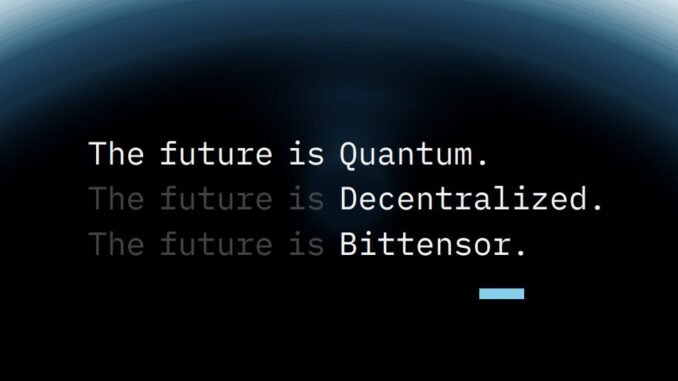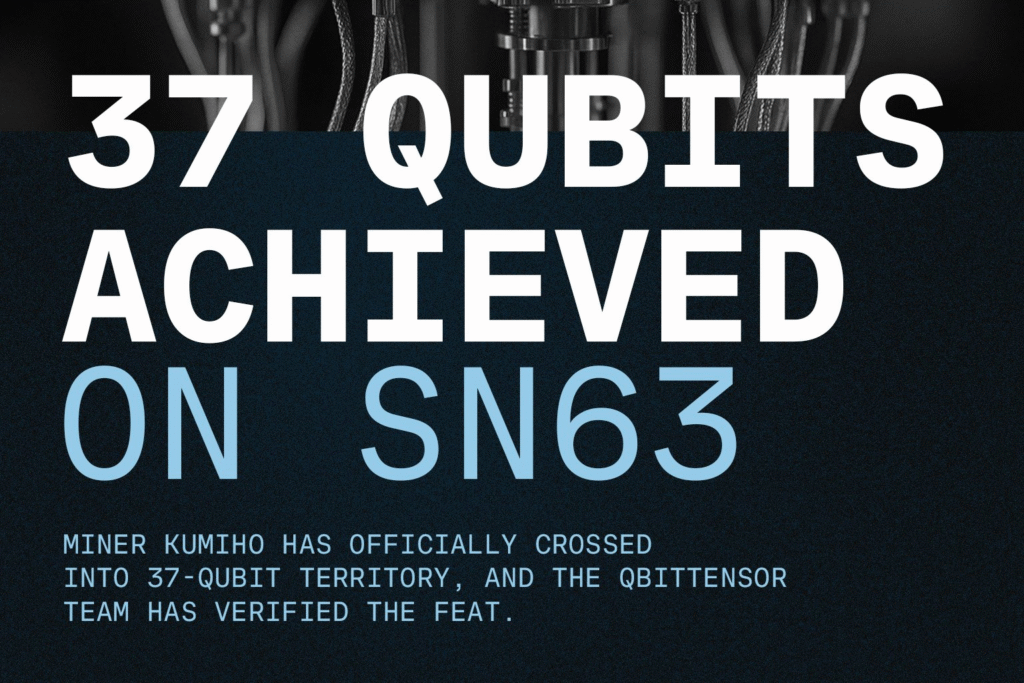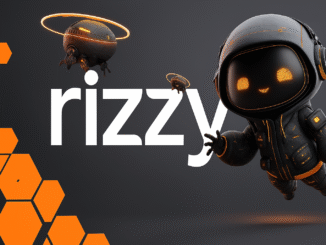
By: Keik
Quantum Innovate, Subnet 63 is operated by Qbittensor Labs, the research arm founded by Bob Wold, who is also CEO of Quantum Rings and its parent company, OpenQuantum. Their focus is on bringing real-world quantum simulation into Bittensor, starting with SN63’s innovation lab and expanding outward with SN48, the upcoming quantum marketplace.
Since quantum computers for real-world use cases don’t exist yet, there is enormous demand for simulators that can run quantum algorithms. For instance, IONQ, a company that makes quantum simulators, has a $23 billion market cap as of 26/09/2025.
SN63 functions as a decentralized research lab. Its mission is to push the boundaries of quantum computing by setting open challenges for miners to solve. These challenges explore problems like Peaked Circuits, Hidden Stabilizers, and soon, Shor’s Algorithm, which is a key puzzle with massive implications for cryptography and blockchain security.
The Challenges
Peaked Circuits
Think of this like searching for a hidden signal inside a storm of noise. Participants are given a quantum circuit and must simulate it to find the one output state that appears most often, the “peak.”
Why it matters: This challenge builds on research by Scott Aaronson and Yuxuan Zhang, and it sharpens tools for quantum simulation and benchmarking. Better simulations mean stronger applications in optimization, cryptography, and materials science. It’s about proving quantum advantages are real and verifiable.
Hidden Stabilizers
Here, miners face circuits that look messy and complex but secretly hide a simpler structure. The goal is to uncover the “stabilizers”, mathematical rules that keep the final state intact.
Why it matters: Rooted in the work of Daniel Gottesman and others on stabilizer codes, this puzzle strengthens understanding of error correction. That’s essential for making quantum machines reliable enough to handle real-world problems. In fact, a miner recently solved this challenge by using Pauli propagation instead of brute-force methods. This approach bypassed exponential slowdowns and proved why SN63 is more than puzzles; it’s already producing genuine innovation.
Shor’s Algorithm (upcoming)
This is the big one. Shor’s algorithm is famous for its potential to crack modern cryptography by factoring huge numbers quickly. SN63 won’t break encryption directly, but it challenges miners to simulate how the algorithm works: modular multiplication, quantum Fourier transforms, and recovering hidden patterns in arithmetic.
Why it matters: At scale, Shor’s algorithm could break RSA and other encryption methods. By testing how far classical simulations can go, SN63 helps predict when quantum breakthroughs might realistically threaten today’s systems.
Who are their customers?

SN63 doesn’t serve “customers” in the traditional sense. It serves communities.
- Researchers & Miners → Compete to solve these challenges, sharpen their skills, and earn TAO rewards.
- The Bittensor Ecosystem → Gains credibility and technical depth by hosting quantum research on-chain.
- Future Partners → Universities, startups, and even enterprises could leverage this subnet as an open innovation hub.
How do you use it?
Unlike other subnets where users call APIs, SN63’s product is innovation itself.
- Challenges are posted.
- Miners join, simulate, and compete on solutions.
- The subnet evaluates and rewards the best ideas.
It’s basically a global, permissionless tournament of minds, funded by the TAO economy.

Direct benefits for alpha holders
Staking into SN63 does not give equity in research outcomes or intellectual property. Instead, it offers:
- Optionality: Today it’s research challenges; the results will directly support SN48’s upcoming quantum marketplace, and collaborations with universities or enterprises are expected.
- Marketplace Credits: In a recent livestream, Bob Wold (CEO of Quantum Rings and founder of Qbittensor Labs) revealed that staking SN63 or its sister subnet SN48 will give holders credits for use in the upcoming quantum marketplace launching this fall. That means staking isn’t just passive yield, but also early access to real-world utility.
Additional ecosystem value
- Knowledge → Value: Solving these problems strengthens the tools that power AI, cryptography, and optimization, giving alpha holders insight into frontier science.
- Talent Magnet: By attracting top researchers, SN63 boosts the prestige and activity of the Bittensor network, which can indirectly support network growth and token value.
- Early Exposure: Being an early participant positions alpha holders to observe and potentially benefit from future breakthroughs or collaborations in the ecosystem.
The Takeaway
Subnet 63 is a proving ground where decentralized AI meets quantum research. By turning frontier problems into open competitions, SN63 transforms cutting-edge science into a permissionless game anyone can play.
For TAO holders, it’s more than staking into another subnet. It’s an early ticket into the quantum era where today’s puzzles could become tomorrow’s breakthroughs, and where staking could turn into direct utility inside the upcoming quantum marketplace (SN48).
The future of Bittensor won’t just be neural networks but will be quantum networks. And SN63 is the first step.




Be the first to comment